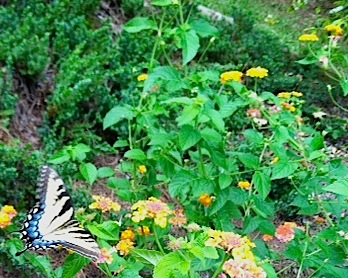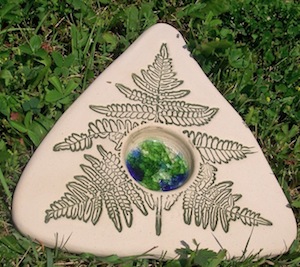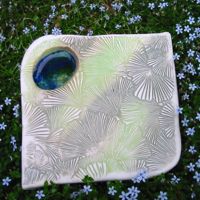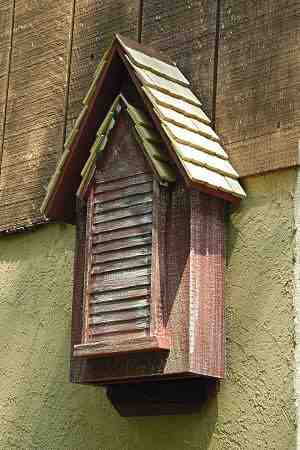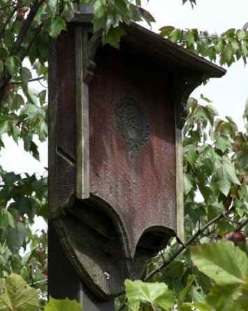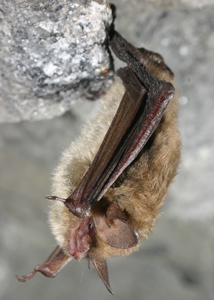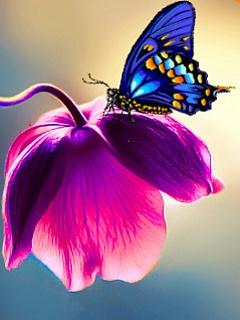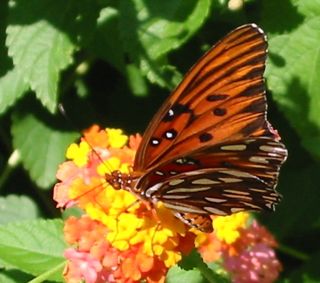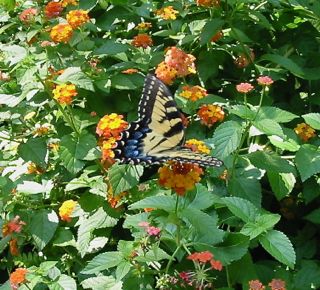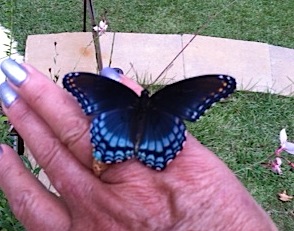-
Add a Ginko or Fern Near Butterfly Feeders
Nobody’s thinking butterflies just yet, but it won’t be too long! With several migrations underway, monarchs, swallowtails and others will be arriving soon. Their numbers are way down which is alarming to scientists, pesticides and climate change being key factors.
If you’d like to have these pollinators gracing your garden, here’s a few simple things to consider:
•Call it quits and abandon the use of any pesticides and herbicides.
•Plant native flowers and shrubs to benefit the flying jewels. Two-part, for food and hosting the chrysalis. A simple search on the web will reveal an abundant list of options for your locale.
•Leaf misters are mighty appealing to butterflies. They’re simple to install and even portable, your garden will grow lush too as a result of the gentle spray of water!
•Add butterfly feeders, in the form of nectar producing flowers, over ripe fruit, or an actual feeder that offers nectar via wicks. The wicks re-create the way butterflies use their long middle antennae to draw nectar from flowers.
•Butterfly Houses? Not so much, but they do look awesome in the landscape!
•Try a stoneware butterfly puddler for a cozy place to warm themselves in the sun.
Aside from an artsy garden accent, they can be used as feeders or easily transformed into a waterless pond by adding some sand and salts. The Ginko is a new puddler available for 2014 that features a rich texture and natural color. Both styles are complete with instructions for best use.
Help these flying jewels by creating habitat to lure and keep them around. Your garden and the butterflies will thank you!
Now if it ever greens up, we’ll get a cool shot of the new one actually being used in the landscape!
-
These Guys Use Bat Houses too – Please Advocate for Them
Almost eight years later and we’re still dealing with the mysterious fungus known as white nose syndrome which is critically affecting the bat population. Originating in the northeastern US, it’s continually spreading further west and south. Although it may seem trivial to some, the furry, winged mammals (yes they’re mammals) play a key role in the eco-system… especially to farmers and their crops.
A little cl
oser to home, as in our own backyards, bats help control insect populations with behavior that for the most part, goes unnoticed. They just happen to be some of our major pollinators too!
By offering shelter in the form of bat houses, you’ll encourage the critters to stick around. Several species are known to use the houses for roosting, and the shelters range in size from a single chamber to larger 5-chamber models. There’s even designer bat houses to enhance your landscape!
If you can spare 60 seconds, please see the quick note below from the Center for Biological Diversity, and take a stand for bats… thanks!
Since 2006 a deadly fungal disease called white-nose syndrome has killed nearly 7 million North American bats, pushing several species to the brink of extinction and creeping farther across the country every year.
But at least one of these species may get big help from the feds: The U.S. Fish and Wildlife Service has proposed to protect northern long-eared bats under the Endangered Species Act.
These bats have declined by 98 percent over a large portion of their range, and have been waiting a painfully long time for an emergency rescue. But — just as life-saving protections are in sight — the Service’s proposal to protect the creatures could be derailed by greedy energy companies, who are lining up to limit the bat’s protection.
Please take action now to tell the Fish and Wildlife Service to protect northern long-eared bats without delay. If we wait any longer, it may well be too late.
-
Nature’s butterfly feeders
If the hummingbird buzz and pre migration isn’t enough activity right now, the local butterfly population seems to have exploded! The past few days have provided some mesmerizing views around the garden. Four species of the jeweled wonders have been spotted flitting around flowering shrubs and plants.
Lantana, butterfly bush and abelia have recently been the most popular of nature’s butterfly feeders. Monarchs and swallowtail butterflies being the most abundant. In past years the leaf misters were especially attractive, but with all the rain this season, they haven’t been employed much. Instead the rains have produced bumper crops of flowers, in turn feeding anyone who pollinates!
Store-bought butterfly feeders are great, especially the ones with wicks that allow butterflies to feed more naturally (like drawing nectar from flowers). Even a plate of over-ripe fruit chunks may entice, but nothing beats nature’s feeders!

